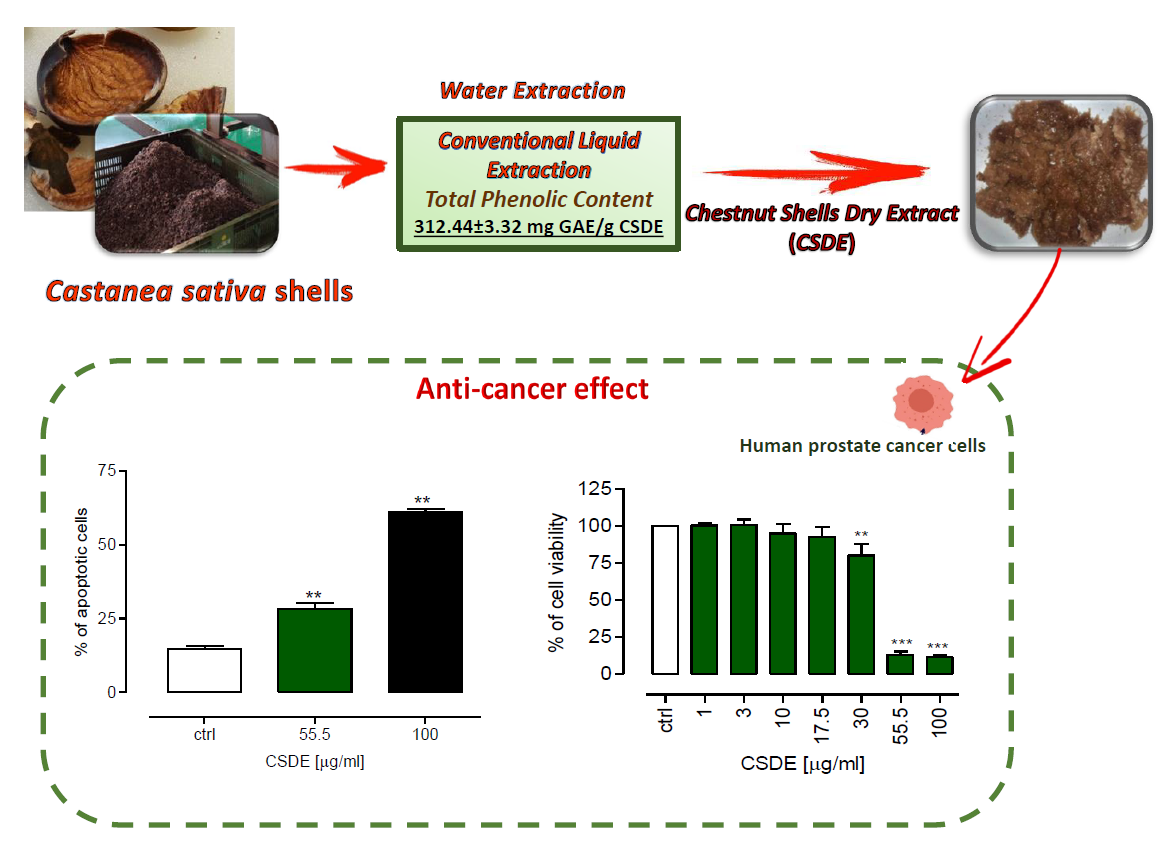In this study, bioactive compounds present in chestnut shells (CS) - derived from the industrial peeling processing - were extracted through different procedures. The aqueous extracts were characterized and the highest extraction yield and total phenolic content was obtained by Conventional Liquid Extraction (CLE). Gallic and protocatechuic acids were the main simple phenols in the extract with 86.97 and 11.20 mg/g chestnut shells dry extract (CSDE), respectively. Six tumor cell lines (DU 145, PC-3, LNCaP, MDA-MB-231, MCF-7 and Hep G2) and one normal prostate epithelial cell line (PNT2) were exposed to increasing concentration of CSDE (1-100 µg/mL) for 24 h and cell viability was evaluated using MTT assay. A reduced rate in cell viability was observed in DU 145, PC-3, LNCaP and MCF-7 cells while viability of MDA-MB-231 and Hep G2 cells was not affected except for PNT2 cells at a concentration of 100 µg/mL. Furthermore, CSDE-at concentrations of 55.5 and 100 µg/mL- lead to a significant increase of apoptotic cells in DU 145 cells of 28.2% and 61%, respectively. In conclusion, our findings showed that CS might be used for the extraction of several polyphenols that may represent good candidates for alternative therapies or in combination with current chemotherapeutics.

